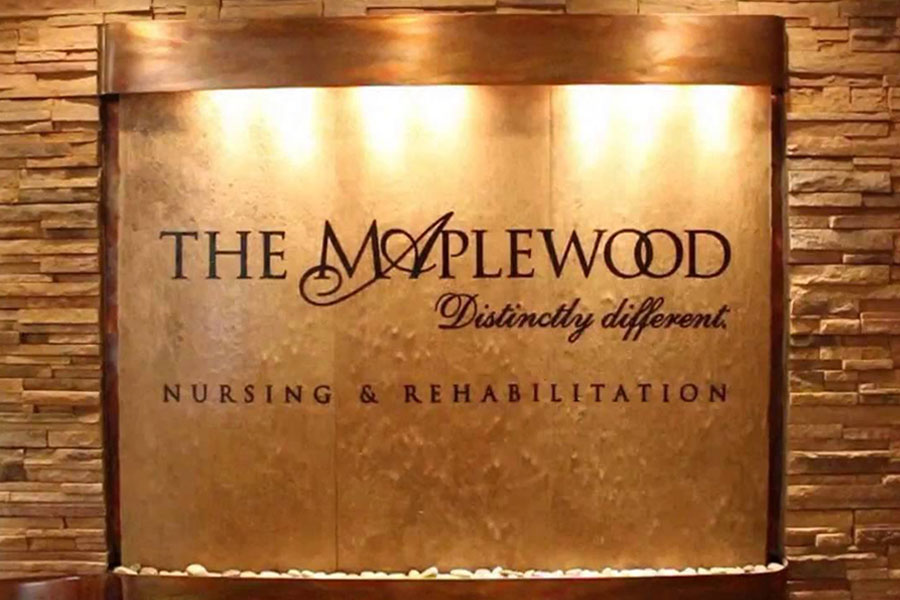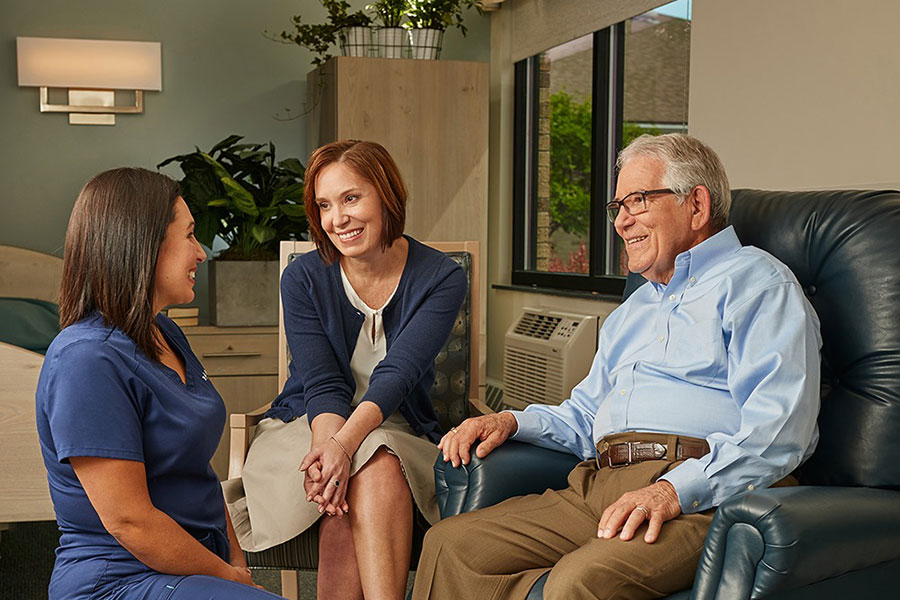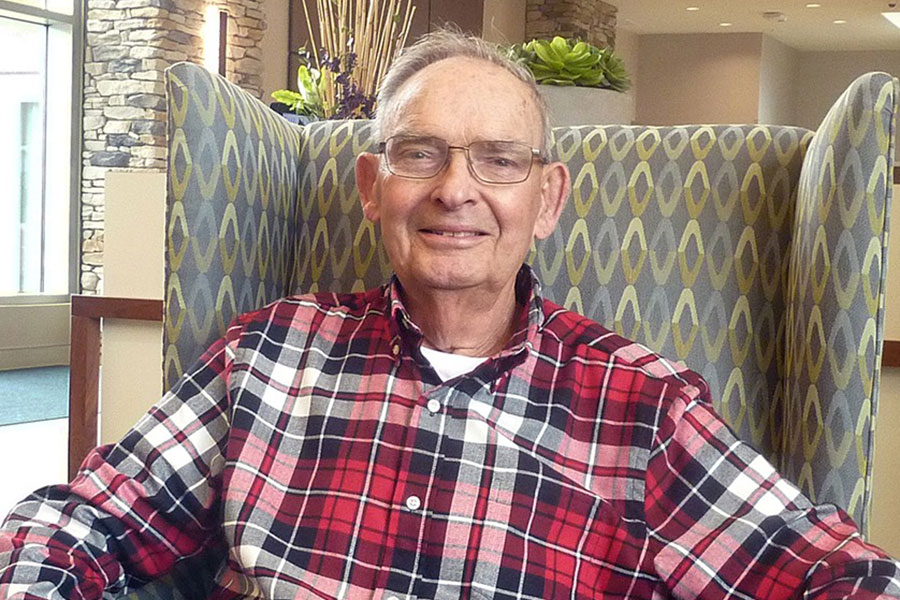The Maplewood is a family-owned, 74-bed long-term care/private nursing facility in Webster, New York. Gary Sacco, Activity Director, and Lori Porte, Volunteer Coordinator, talk about the reasons CareShare Manager, their engagement relationship management solution, is at the heart of everything they do.
Customer Relationship Management Solutions in Elder Care:
The Maplewood
Originally published by Healthcare Information and Management Systems Society, Sept 25, 2019.
The Maplewood is a family-owned, 74-bed long-term care private nursing facility located in Webster, New York. Originally opened in 1947, The Maplewood was created and continues to thrive as a family-focused, loving, and caring environment that also meets the clinical needs of its elderly residents. While the nation was swept along by government intervention through increasing regulation by CMS, the Maplewood decided to forge a different path. With each change to Medicare and Medicaid, the Maplewood doubled down on serving the needs of individuals and their families instead of following a bureaucratic, impersonal, and institutional approach to elder care.
Where others see statistics and categories of problems, the Maplewood sees people; mothers and fathers, sons and daughters, husbands and wives who ask the same question. How can the person I love enjoy the best life possible?

The Maplewood knows from experience that when they answer that simple question, everything else falls into place. To them it’s not a problem to solve, it’s an opportunity — an opportunity to make someone’s life better, to strengthen their community by serving its families, and in some small way to make the world a kinder, happier place.
Every single aspect of the Maplewood has been created with a focus on building trust, building relationships, and placing their residents’ lives at the center. In this case study, members of the Maplewood team discuss why their customer relationship management (CRM) solution, CareShare Manager, lies at the heart of everything they do. From scheduling activities focused on their residents’ specific desires, taking a proactive approach to personalizing family and/or volunteer visits that help overcome loneliness, measuring and analyzing behaviors and interpersonal relationships and engaging family members through regular, flexible two-way communication, the Maplewood leverages this tool to support their objective of improving the quality of life for their residents and engaging and communicating with their families to build strong and lasting relationships.

The Maplewood primarily wanted a system geared to their work in recreation and activity management. The organization uses PointClickCare for their EMR system, which was used by the nursing team but left a lot to be desired in terms of helping schedule effective and relevant activities, managing their growing volunteer network, staying on top of personal requests whether they be from the resident or the family members, analyzing trends in participation, behavior, and interpersonal relationships, as well as the overall nuts and bolts around scheduling a monthly calendar of activities.
“Information is power and once we understood how much information our CRM system contained, we began to recognize that we simply could not provide the quality of care and continue to use manual techniques and methods and tools,” Gary Sacco said.
“What has helped us come full circle is gaining an understanding that the power of our CRM system lies in our ability to now communicate with family members and engage them in improving the quality of life of their loved ones here at the Maplewood nursing home. The ability to more effectively and efficiently communicate with family members and loved ones has been revolutionary. I know of no other nursing home in this area that has the ability to communicate as deeply and richly as we can with family members. We now have the ability to share with family members the frequency of activity engagement, the frequency of personal visits made by our volunteers and staff and family members, and easily record our observations of behaviors and interpersonal relationships. We also have the ability to create and track individualized activities for each of our residents that can be geared more specifically to that resident preferences which before using our CRM system was impossible.”
Key Capabilities: Informed Care Delivery and Engagement
Since the implementation of this solution, the Maplewood staff and resident families have recognized value from the many capabilities and analysis it added. The solution provides a wide range of analytics and reports including personal attendance reports, visit reports, activity scheduling reports, behavioral and interpersonal relationship reports, and participation trending reports. We can report on any piece of information in the system compared to any other piece of information in the system as long as we are tracking that information in the database.
Activity Management
Lori Porte shared, “This CRM tool is extremely important in letting us and the families know that their loved ones are participating in the available activities because many times our residents don’t remember this participation. Family members are thrilled that they now have access to this information despite a loved one’s failing memory. It is very important for our residents to do things even though they may not remember doing them and sometimes we are able to nudge their memory because we now know what they have participated in or not.”
The activity management capabilities have allowed for the collection of valuable information at a more granular level. “A resident may not remember that a family member came to visit and took them to the park at 5:00 pm the day before but by tracking that activity at the resident level, everyone who is concerned about the quality of care is now informed about this resident at a much deeper level,” Gary said.
Volunteer Management
Beyond activity tracking, volunteer management capabilities have enhanced coordination between the Maplewood and their team of volunteers. The system contains activity leader reports that help determine how often certain volunteers or residents are actually leading activities and how successful they are, volunteer interest reports, volunteer serving frequency reports, volunteer participation levels, active versus inactive volunteers and many others. The solution allows volunteers to self-manage their activity involvement and support by accessing the Maplewood’s activity schedule and their personal schedule. Volunteers can also use the check-in/checkout process that automatically calculates hours in the building and hours spent supporting specific activities.
“We now have a report that we can access that shows who was in the building, when they were in the building and what activities they supported while they were here. We have a big awards ceremony for our volunteers at the end of each year and this report specifically summarizes the level of involvement by each of my volunteers, so that I can recognize them for their service,” Lori said.
“Recently, we had a situation where a church group came to the community to help us on a Sunday. Our nurses had some questions about the planned activities that these volunteers could support.
They used our CRM system to determine what activities were occurring that day in what locations, and it allowed us to best utilize these unanticipated volunteers and make their experience a rewarding one.”
Staff Engagement with the CRM Solution
The Maplewood currently manages and engages with 166 volunteers with their CRM system. “This number of volunteers would be unmanageable without CareShare Manager,” Lori shared.
“We have now joined forces with our therapy department to create events that can promote greater participation in therapy-related activities for smaller groups, like a painting group, cooking groups, current affairs discussion group or any smaller group more specifically geared to promoting more
therapy,” Gary said. “In PointClickCare, we do not have the capability to schedule and track small group events, but our CRM system does. By combining the expertise of our occupational therapists with the experience we have in creating, tracking, and measuring activity participation by individual residents, we are really breaking new ground in promoting person-centered care as one of our primary objectives.”
Realized Care Benefits
Activity Tracking
Using the Participation Trending and Analysis Reporting capability in their CRM solution allows the Maplewood to observe resident participation and activity levels. “For example, let’s start with the resident who has consistently attended 40 to 45 events every month for the past five months. From our report we see that that activity level drops by 60%, which prompts the question ‘why is this activity participation decreasing for this resident?’ Sometimes this can portend a decline in this resident because this resident is simply losing the capability of attending as frequently as they would like,” Gary said.

“On the flipside, I think it is important to also understand the impact of a resident’s increase in participation as well,” Lori highlighted. “This piece of information can tell us how a resident is assimilating themselves into their new home and engaging in life again. It gives us a good baseline of information around their behaviors, likes and dislikes, and overall engagement, which helps when we analyze changing trends in behavior, participation, and interpersonal relationships. This information is also vitally important to share with family members because it reinforces their belief that their loved ones are receiving the quality of care that they expect them to receive.”
“It’s sad but true that many nursing homes are set up as a place for people to come and die, but at the Maplewood we are able to enhance the quality of life by measuring and analyzing participation, behaviors, observed interpersonal relationships, and gear our care to what is going to be in the best interests of our resident’s quality of life. This documented evidence is a huge plus for us and our residents.”
Gary added, “There are additional nuances available to us because if we analyze the tracked behaviors and comments and we see “left early” several times by the same resident in the same activity, we can determine, for example, if this resident is needing to go to the restroom because this activity is occurring before lunch and they want to make sure that’s taken care of. With this
information we are now able to accommodate that resident’s need by engaging a volunteer to transport that individual to the restroom before lunch. There are dozens of examples of where this information around behaviors during activities has been valuable to us in helping our residents. It helps the resident establish a pattern, reduces their anxiety, and gives the staff and volunteers a heads up when certain accommodations should be made for a resident. None of this would be possible without our CRM tool.”
Family Member Engagement in Care
The CRM solution’s adoption also contributes to the ability to track feedback from family members to inform care.
Gary shared, “A perfect example we have seen is a resident may continue to mention the name of an individual who we are not familiar with. However, a family member might be able to give us insight into who that person is, revealing a great-grandchild who is no longer an infant, but who is in junior high school. Tracking those discoveries can lead to scheduling a Skype call with the family and the great-grandchild. Without family engagement we simply would never know that information.”
“Sometimes we find out from family members that the resident just doesn’t like that activity but for whatever reason was not willing to share that information with us,” Lori added, further highlighting the importance of family member input into the information gathered.
Overall Quality of Life Improvements
The information the staff and volunteers are now armed with provide them with the knowledge to continue to foster improvements in resident quality of life. “I think we tracked 133 personal visits for 75 residents last month with the vast majority of those being conducted by volunteers,” Gary shared. “Without our CRM system, it would be impossible to measure the quality and quantity of visits down to an individual level.”
“We know loneliness can have a negative impact on overall health, and the best way to overcome loneliness is human-to-human interaction. We have exception-based reporting that tells us when a particular resident has been without a visit for more than two weeks. If a resident enjoys the company of particular volunteers or staff members, we can flag that on the resident’s record so we can schedule them for a visit when they are on site.” Lori said.
“We see visits as a more personalized way to make observations and note potential behavioral changes. We currently maintain records on hundreds of visits every month and that visit information is shared with family members, whether they are participating in the visit or not. If a request is made during a visit by the resident or family member, that request is immediately brought to the attention of our team and continues to be reported on daily until there is a successful outcome noted on that request.”
Future Expansion of CRM Use
While the Maplewood has implemented many of the capabilities within their solution, they recognize there are untapped functionalities that may be implemented in the future.
For example, the solution includes the capability for family members to electronically register their visit and make notes about that visit, but we are currently not using that functionality. While not currently implemented at the Maplewood, it is on their radar for potential future adoption if needed.
Some adoption has been a direct result of state mandates in which the CRM has provided solutions to assist with capturing mandated information, which will likely inform future implementations as well. “I can tell you that if the state of New York declares that we must provide automated check in check out of visitors, we will use that functionality,” Lori stated. “I am sure that as our needs evolve that our CRM system is flexible enough to accommodate a solution.”
Other functionality that is available have not been implemented. For example, there is the potential to provide online access to notes and observations to family members that has not been deployed.
While this capability provides the opportunity to engage family members more deeply and “open up another two-way communication capability to promote a better relationship by giving family members the ability to share requests and concerns with staff members directly” as Gary points out, others, like Lori, want to take a more conservative approach because of the possibility that the information “might be misconstrued by family members.” These discussions are ongoing as they determine the best approach for greater family engagement.
Lessons Learned
In their journey through the adoption of this system into their organization, there have been key takeaways. One of note was the importance of leveraging customer support rather than seeking the solutions on your own. Lori shared, “Don’t try to learn everything about this system at one time because it will lead to frustration. I have learned that if I need a unique report, I will take advantage of our support contract and have that report written rather than facing hours of frustration trying to learn how to write that report myself.” Gary added another key takeaway was to “use the reports that are provided and if you are building a new report, start with one of those templates first rather than building a report from scratch.”
The team also realized that not all legacy system options met their needs. “We learned the hard way that Google calendar was so restrictive that it hindered our ability to get things done, so my lesson learned was to take a look at all options rather than walking in on one and thinking it’s going to work,” Gary said.
Leveraging Vendor Support throughout the Journey
Throughout their experience, the Maplewood team highlighted the value of the CareShare Manager (CSM) team in troubleshooting problems and assisting with requests. “The CSM staff work very hard to iron out issues in an expedient manner. The last update was slightly quirky, but they often are on
top of any system issues before we even encounter them,” Gary said. The team also offers onsite training and visits to improve the system throughout the year.
Summary
Over the last three decades, the classic notion of Customer Relationship Management (CRM) has focused around building relationships through customer acquisition that begin as a sales lead, are built with continuing sales contact, fostered through provision of an appropriate solution to a business issue, and strengthened over time by continuing attention to new business challenges and offering additional B2B solutions on a recurring basis.
However, that model weakens in the context of creating a CRM strategy for healthcare. Long Term Care (including Senior Living and Assisted Living) and Post-Acute Care such as (Home Care, Memory Care and Nursing Homes) have been notoriously lacking in their ability to keep families, friends and other care providers informed about and engaged in the care being provided to their loved ones through any kind of efficient, effective and ongoing communication or data sharing.
This lack of communication and inability to stay engaged can lead families to frustration and can easily escalate to anger about the perceived level of care being provided to a loved one which consequently increases a community’s unwanted and unneeded legal risk and promotes expensive and disruptive resident turnover.
As seen in this example from the Maplewood, CRM holds the promise of risk reduction for these communities while building relationships which will improve the quality of life for residents in those communities.
Schedule a conversation or 15-minute CareShare tour using the Quick Inquiry form with an engagement expert. Let’s discuss how the highly-customizable CareShare solution can bring these benefits to your community.

